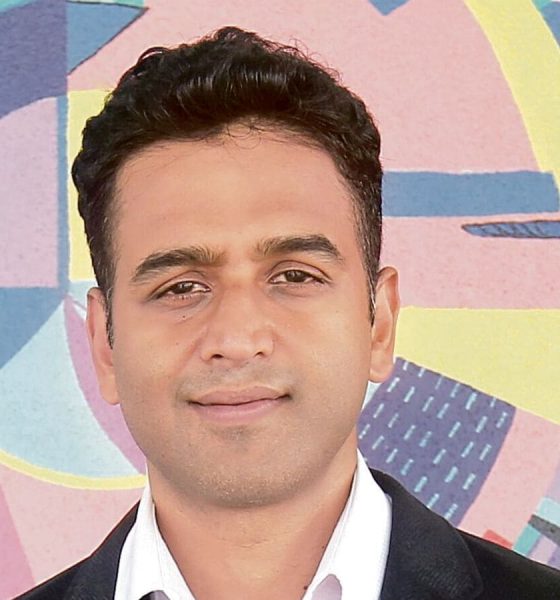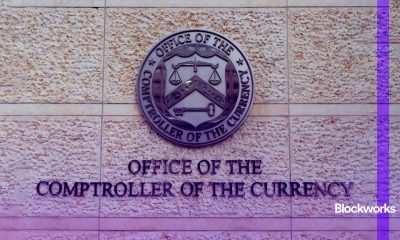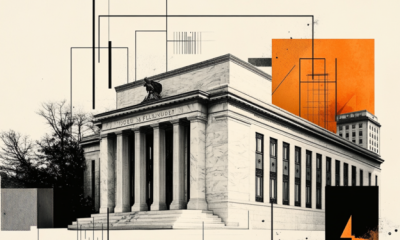
Technology
‘Tends to affect the poor’: Nithin Kamath flags challenges of digital onboarding for rural users on fintech platforms – Crypto News
Zerodha co-founder Nithin Kamath points out that fintech platforms have aided financial inclusion in India, especially in rural areas, yet challenges of digital onboarding continue. He advocates for user-centric technology designs that address limitations and support vulnerable communities without causing disruptions.
In a post on the social media platform X, Kamath said, “The entire Indian financial services industry, including Zerodha, has been a massive beneficiary of the ease of digital onboarding via Aadhaar e-Sign, eKYC, etc. It has been a big reason for the increase in financial inclusion among Tier 2 and 3 cities and rural parts of the country; people who had not previously interacted with the formal financial system.”
Issues faced by digital systems
Highlighting the challenges of digital platforms, Kamath noted, “While many of us take the benefits of these digital systems for granted, being in a city like Bengaluru (and a position of privilege), I was surprised by the extent of challenges with OTP verification and the physical/biometric side.”
According to Kamath, digitisation has minimised fraud and wastage, but no technology implementation is flawless.
“While digitisation has helped reduce fraud, leakages, and wastage, no single implementation of technology can be perfect. SEBI, for instance, has strict regulations that mandate brokers to offer services via multiple modes, not just a single interface like an app,” he said.
He added, “Biometric devices, in particular, even under ideal conditions, sometimes do not work as intended. The other challenge is with OTPs. People in remote parts of India still struggle with mobile connectivity, leading to delays in verification and the disbursal of benefits. These technological systems tend to affect the poor and vulnerable the most.”
Kamath further noted that technology has trade-offs, particularly in rural India, where economically vulnerable populations live. Balancing benefits and harms is crucial, as even minor disruptions can negatively impact daily life amid ongoing financial inclusion efforts.
What should be done?
He advocated for developing user-focused technologies using a first-principles, “graceful degradation” approach. This becomes increasingly important in the case of public technology designed for citizen services. It is essential to recognise the limitations of various technologies and carefully plan alternatives that reduce disruptions and preserve the hard-won benefits that these digital systems have provided to all Indians.
What do netizens say?
Several social media users have reacted to Kamath’s post, where most agree with his sentiment.
One of the users wrote, “We see the promise — and the ground reality. Digital onboarding widened access, but in rural parts, the reality is very different: flaky networks, failed biometrics, and opaque fallbacks push people back into queues. We must design for failure-first: offline paths, human handholds, and local trust.”
Another added, “Well said. Digital onboarding has been a game-changer for financial inclusion, but acknowledging the gaps and designing for rural users is what will make it truly impactful.”
A user noted, “Absolutely agree! The digital onboarding initiatives have really transformed financial accessibility in India, unlocking immense potential in Tier 2 and 3 cities. It’s exciting to witness such progress.”
-
![CSX Corp. (CSX) Stocks Elliott Wave technical analysis [Video]](https://dripp.zone/news/wp-content/uploads/2025/02/CSX-Corp-CSX-Stocks-Elliott-Wave-technical-analysis-Video-400x240.png)
![CSX Corp. (CSX) Stocks Elliott Wave technical analysis [Video]](https://dripp.zone/news/wp-content/uploads/2025/02/CSX-Corp-CSX-Stocks-Elliott-Wave-technical-analysis-Video-80x80.png) others1 week ago
others1 week agoDow Jones slides to one-week low as government shutdown persists – Crypto News
-
![CSX Corp. (CSX) Stocks Elliott Wave technical analysis [Video]](https://dripp.zone/news/wp-content/uploads/2025/02/CSX-Corp-CSX-Stocks-Elliott-Wave-technical-analysis-Video-400x240.png)
![CSX Corp. (CSX) Stocks Elliott Wave technical analysis [Video]](https://dripp.zone/news/wp-content/uploads/2025/02/CSX-Corp-CSX-Stocks-Elliott-Wave-technical-analysis-Video-80x80.png) others1 week ago
others1 week agoDow Jones slides to one-week low as government shutdown persists – Crypto News
-

 Metaverse1 week ago
Metaverse1 week agoWhat Satya Nadella’s latest shakeup says about Microsoft’s evolving AI strategy – Crypto News
-

 Metaverse1 week ago
Metaverse1 week agoWhat Satya Nadella’s latest shakeup says about Microsoft’s evolving AI strategy – Crypto News
-

 Technology1 week ago
Technology1 week agoAI isn’t the dot-com bubble, but that won’t stop it from ending badly – Crypto News
-
Business1 week ago
Zcash (ZEC) Extends Rally Above $200 as Privacy Narrative Gains Reflexive Momentum – Crypto News
-

 Blockchain1 week ago
Blockchain1 week agoTRUMP Meme Coin Fights For Survival – Crypto News
-

 Blockchain1 week ago
Blockchain1 week agoXRP Price Under Fire – Extended Decline Raises Fears Of Another Major Sell-Off – Crypto News
-
Business1 week ago
Breaking: Grayscale Solana ETF (GSOL) to Trade with 0.35% Fee – Crypto News
-

 others6 days ago
others6 days agoChina’s Commerce Ministry urges US to correct its wrong practices as soon as possible – Crypto News
-

 Blockchain1 week ago
Blockchain1 week agoBitcoin Needs Only A Minor Push To Reach $175K: Analyst – Crypto News
-
Business1 week ago
Senate Democrats’ New DeFi Regulation Proposal Stalls Crypto Market Structure Talks – Crypto News
-

 Blockchain1 week ago
Blockchain1 week agoCrypto Entry-Level Jobs Are Scarce: Dragonfly Capital – Crypto News
-

 Metaverse1 week ago
Metaverse1 week agoBubble or not, the AI spending binge is unprecedented in every way – Crypto News
-

 Technology1 week ago
Technology1 week agoChatGPT will soon pay for you! India’s AI payment pilot set to go live: What it means for users – Crypto News
-

 Cryptocurrency4 days ago
Cryptocurrency4 days agoStripe’s stablecoin biz seeks national bank trust charter – Crypto News
-

 Blockchain1 week ago
Blockchain1 week agoBitdeer Ramps Up Bitcoin Self-Mining As Rig Demand Cools – Crypto News
-

 Technology1 week ago
Technology1 week agoMeta AI on Instagram can now dub your reels in Hindi: here’s how the feature works – Crypto News
-
Business1 week ago
ASTER Airdrop Delayed to October 20 Amid Criticisms Over Token Allocations – Crypto News
-
Technology1 week ago
Tom Lee’s Fundstrat Predicts Ethereum Rally to $5,500 Following ETH ‘Bottom’ – Crypto News
-

 Cryptocurrency1 week ago
Cryptocurrency1 week agoThe Latest Nobel Peace Prize Winner Is a Bitcoin Supporter – Crypto News
-

 Technology6 days ago
Technology6 days agoBest phones under ₹15,000: Oppo K13 5G, Infinix Note 50s, iQOO Z10x and more – Crypto News
-
others1 week ago
Peter Brandt Lists XRP Among Shorts Amid Crypto Market Crash – Crypto News
-
Business1 week ago
Bank of America, Citigroup and Goldman Sachs Explore Issuing Stablecoins Pegged to G7 Currencies – Crypto News
-

 Technology1 week ago
Technology1 week agoBose Angers Customers by Ending Cloud Streaming for Old Speakers – Crypto News
-

 Technology1 week ago
Technology1 week agoBose Angers Customers by Ending Cloud Streaming for Old Speakers – Crypto News
-
Technology1 week ago
STON.fi CMO on Building TON’s Largest Swap & Liquidity Aggregator – Crypto News
-

 Cryptocurrency1 week ago
Cryptocurrency1 week agoCrypto liquidations drive historic market turbulence – Crypto News
-

 others1 week ago
others1 week agoA balanced approach to monetary policy only works if inflation expectations are anchored – Crypto News
-

 others1 week ago
others1 week agoEUR/JPY retreats as Euro slides on French political uncertainty – Crypto News
-

 Cryptocurrency1 week ago
Cryptocurrency1 week agoWhy Bitcoin could rebound up to 21% this week: experts explain – Crypto News
-

 Metaverse1 week ago
Metaverse1 week agohuman intelligence for artificial minds – Crypto News
-

 Metaverse4 days ago
Metaverse4 days agoWalmart teams with OpenAI for ChatGPT purchases. The retailer is ‘ahead of the curve’. – Crypto News
-
others1 week ago
Breaking: $8 Trillion Morgan Stanley Opens Bitcoin Investments to All Wealth Clients – Crypto News
-

 De-fi1 week ago
De-fi1 week agoLarva Labs Art Blocks Auction Surpasses $30,000 – Crypto News
-
others1 week ago
U.S. Inflation Data: BLS to Release CPI Report on October 24 Amid Government Shutdown – Crypto News
-
Business1 week ago
Crypto Market Loses $670 Billion on CEX Auto Liquidations, Altcoins Crash Intensifies – Crypto News
-

 Metaverse1 week ago
Metaverse1 week agoIndia key to shaping future of Artificial Intelligence, says Anthropic CEO Dario Amodei after meeting PM Modi – Crypto News
-
others1 week ago
Peter Brandt Flips Bullish on Bitcoin, Ethereum, XRP, and XLM – Crypto News
-

 others5 days ago
others5 days agoSeems ‘prudent’ to cut rates further given lower inflation risks – Crypto News
-
others1 week ago
Pump.fun Rival Zora Rallies Over 30% Following Robinhood Listing – Crypto News
-

 Cryptocurrency1 week ago
Cryptocurrency1 week agoMorgan Stanley opens crypto fund access to all wealth clients – Crypto News
-

 Technology1 week ago
Technology1 week agoPENGU turns bullish as Pudgy Penguins teams up with Nasdaq-listed Sharps Technology – Crypto News
-

 Cryptocurrency1 week ago
Cryptocurrency1 week agoPolymarket Token Is Coming, But Likely Not This Year: Sources – Crypto News
-

 De-fi1 week ago
De-fi1 week agoCrypto Markets Plummet as BTC Briefly Drops Below $106K – Crypto News
-
Business1 week ago
Here’s Why XRP Price May Have a Zcash-Like Surge – Crypto News
-

 Metaverse1 week ago
Metaverse1 week agoClaude automates reports and presentations effortlessly – Crypto News
-
Business1 week ago
Is the Bitcoin Top In? Raoul Pal Signals Higher Liquidity Cycle Despite Market Selloff – Crypto News
-

 Blockchain1 week ago
Blockchain1 week agoCrypto Traders Show ‘Rationalization’ Behavior’ After Market Plunge – Crypto News
-

 Cryptocurrency1 week ago
Cryptocurrency1 week agoShiba Inu Burn Rate Crashes 99% as Crypto Sees Largest Liquidation Event Ever – Crypto News










